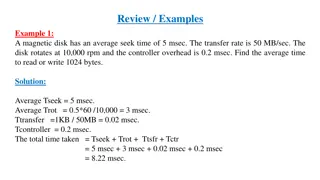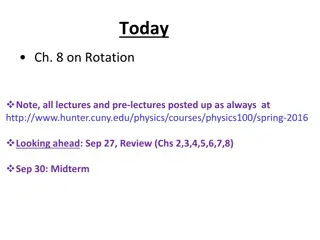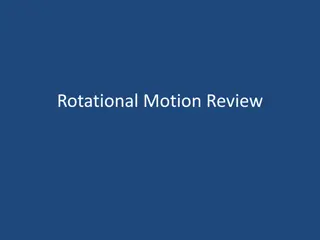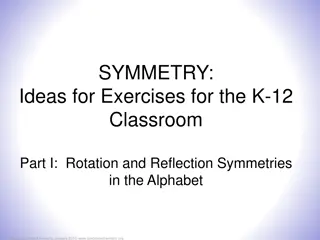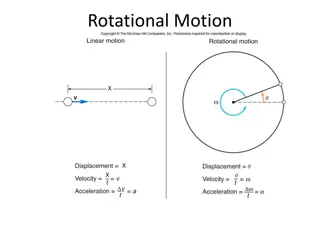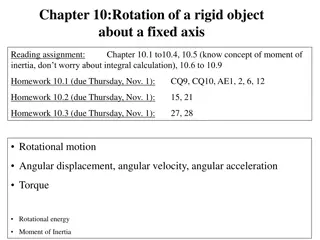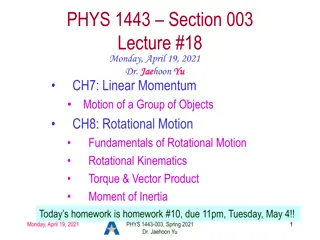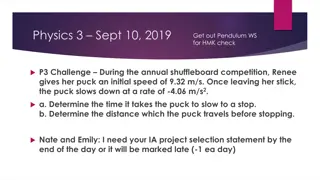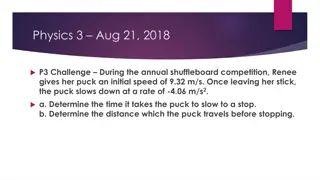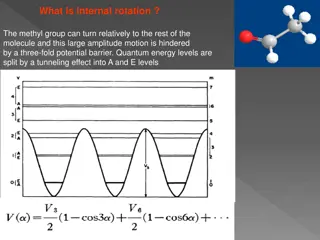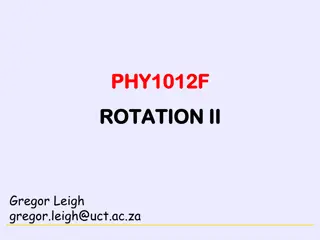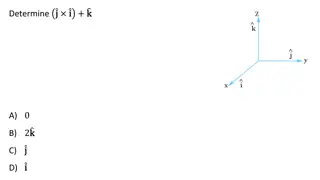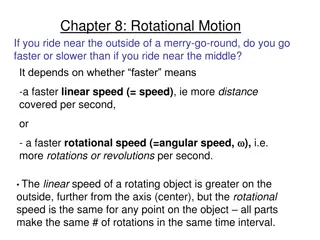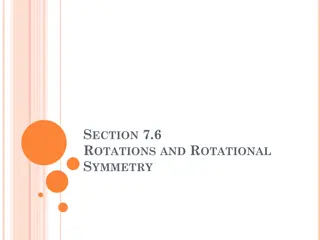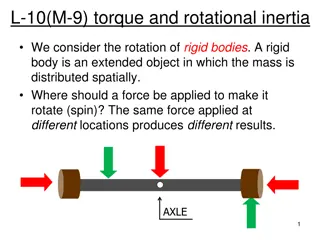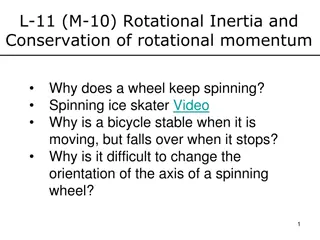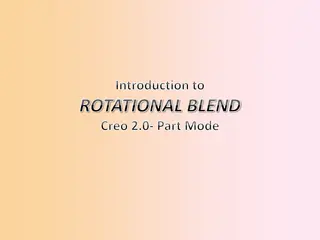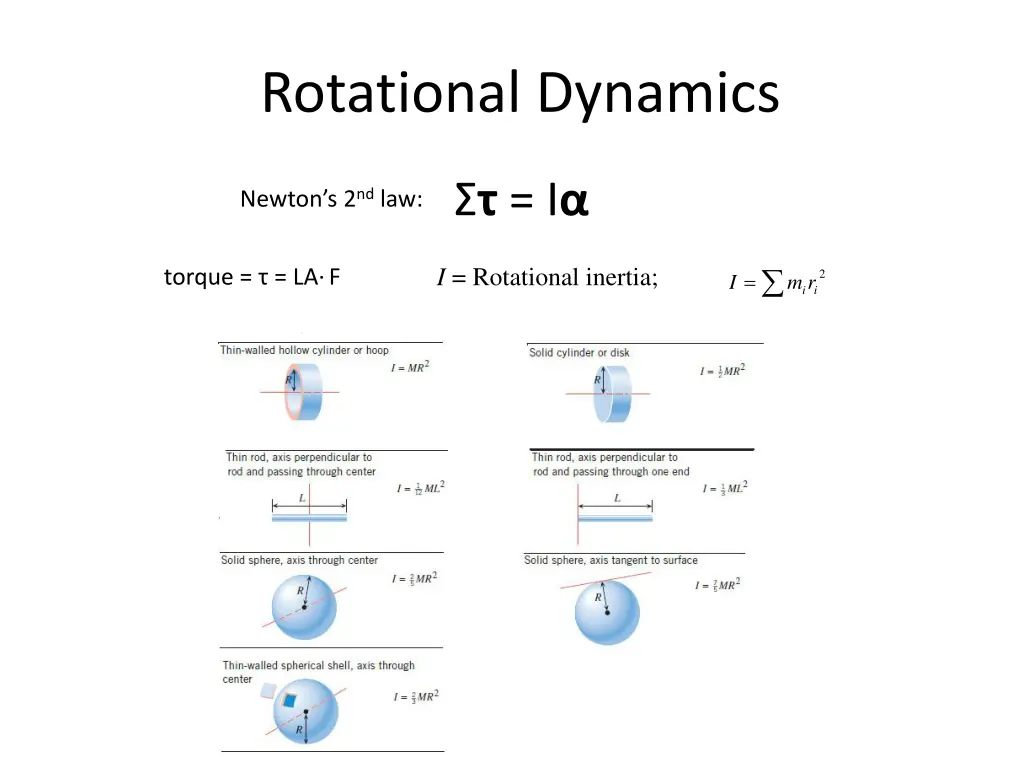
Rotational Dynamics: Calculations and Examples
Explore rotational dynamics using Newton's second law, torque, and moment of inertia through practical examples involving muscles exerting forces, angular accelerations, and moments of inertia of objects like grindstones and motorcycle wheels. Understand the calculations and applications in various scenarios.
Download Presentation

Please find below an Image/Link to download the presentation.
The content on the website is provided AS IS for your information and personal use only. It may not be sold, licensed, or shared on other websites without obtaining consent from the author. If you encounter any issues during the download, it is possible that the publisher has removed the file from their server.
You are allowed to download the files provided on this website for personal or commercial use, subject to the condition that they are used lawfully. All files are the property of their respective owners.
The content on the website is provided AS IS for your information and personal use only. It may not be sold, licensed, or shared on other websites without obtaining consent from the author.
E N D
Presentation Transcript
Rotational Dynamics = I Newton s 2nd law: I = Rotational inertia; torque = = LA F 2 = I m ir i
P12. The triceps muscle in the back of the upper arm extends the forearm. This muscle in a professional boxer exerts a force of 2.00 103 N with an effective perpendicular lever arm of 3.00 cm, producing an angular acceleration of the forearm of 120 rad/s2 . What is the moment of inertia of the boxer s forearm? https://www.healthline.com/human-body-maps/shoulder-muscles#1
P13. A soccer player extends her lower leg in a kicking motion by exerting a force with the muscle above the knee in the front of her leg. She produces an angular acceleration of 30.00 rad/s2 and her lower leg has a moment of inertia of 0.750 kg m2 . What is the force exerted by the muscle if its effective perpendicular lever arm is 1.90 cm?
P14, Ch10: Suppose you exert a force of 180 N tangential to a 0.280-m-radius 75.0-kg grindstone (a solid disk). (a)What torque is exerted? (b) What is the angular acceleration assuming negligible opposing friction? (c) What is the angular acceleration if there is an opposing frictional force of 20.0 N exerted 1.50 cm from the axis?
P15, Ch10. Consider the 12.0 kg motorcycle wheel shown in Figure 10.38. Assume it to be approximately an annular ring with an inner radius of 0.280 m and an outer radius of 0.330 m. The motorcycle is on its center stand, so that the wheel can spin freely. (a) If the drive chain exerts a force of 2200 N at a radius of 5.00 cm, what is the angular acceleration of the wheel? (b) How long, starting from rest, does it take to reach an angular velocity of 80.0 rad/s? I (annular ring) = 0.5 M(R12 +R22 )
P40, Ch9, CJ10: The drawing shows a model for the motion of the human forearm in throwing a dart. Because of the force, ? applied by the triceps muscle, the forearm can rotate about an axis at the elbow joint. Assume that the forearm has the dimensions shown in the drawing and a moment of inertia of 0.065 kg.m2(including the effect of the dart) relative to the axis at the elbow joint. Assume also that the force acts perpendicular to the forearm. Ignoring the effect of gravity and any frictional forces, determine the magnitude of the force needed to give the dart a tangential speed of 5.6 m/s in 0.10 s, starting from rest.


